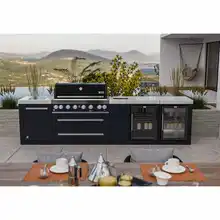In a nutshell, door closers are a piece of hardware that is typically mounted on either the top of a door or on the door frame to easily shut doors in case of fire emergencies and disasters. Most people think that door closers are similar to door hinges. However, a door hinge is a mechanism that is used to allow the opening and closing movements of doors, whereas a door closer is like a supplementary tool for shutting doors closed when necessary.
Uses and types of door closers
Door closers are a core element of the fire safety plan of buildings, especially commercial ones or structures where a large number of people can be present at the same time. When a fire emergency occurs, open doors can fuel the fire and allow smoke to spread rapidly to other parts of the building. Hence, most commercial door closers are automatic to save time and energy in such emergencies.
Door closers can be mechanical or automatic. From the term itself, automatic door closers automatically close doors when no obstacle (e.g., people) is present. By contrast, doors with mechanical door closers require manual intervention. Most detached residential buildings still use mechanical door closers, such as traditional screen door closers. Construction engineers highly support the use of modern-design door closers to maximize the safety features of this mechanism and accommodate different door weights. These door closers include pneumatic door closers and magnetic door closers. For low-budget construction projects, heavy-duty spring door closers and door closer hinges can do the job.
Regulations for door closers
Considering that public safety may be involved, construction and safety authorities impose strict regulations for the installation and use of door closers. Violations of these regulations can merit fines and even prison time.
1. Doors of residential infrastructure, such as apartment doors, must be self-closing. This regulation excludes interior doors within the facility, such as bedroom doors.
2. Fire door assemblies and smoke barriers must be equipped with door closers.
3. Exit doors, exit passageways, and any doors used for egress must be equipped with door closers.
4. Door closers must be inspected regularly to ensure that they are in good condition and do not cause unnecessary hazards.












































 浙公网安备 33010002000092号
浙公网安备 33010002000092号 浙B2-20120091-4
浙B2-20120091-4